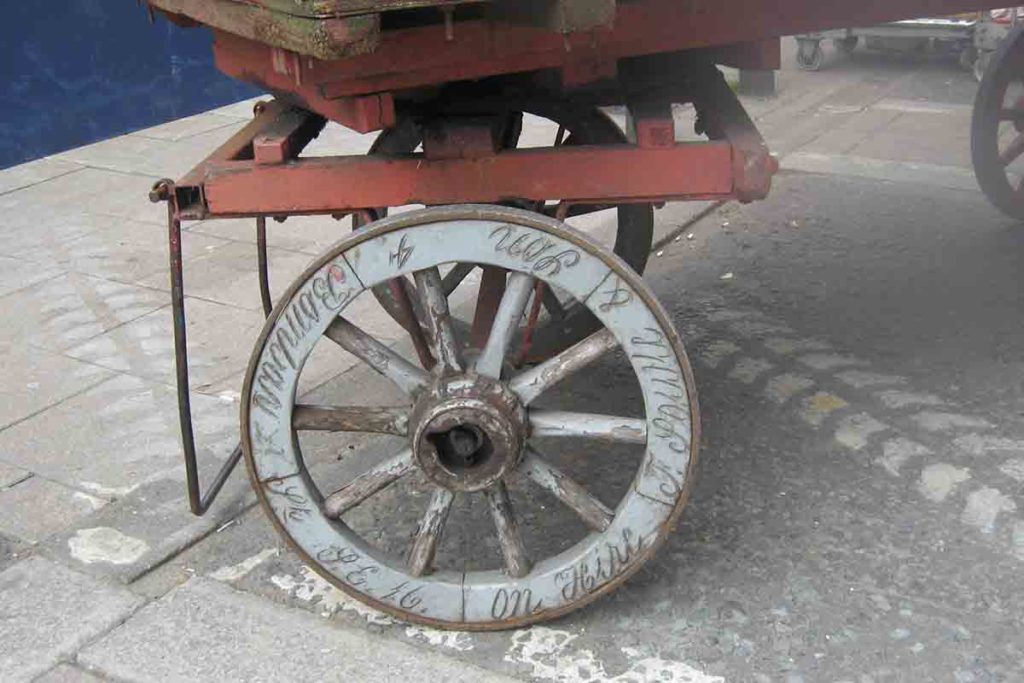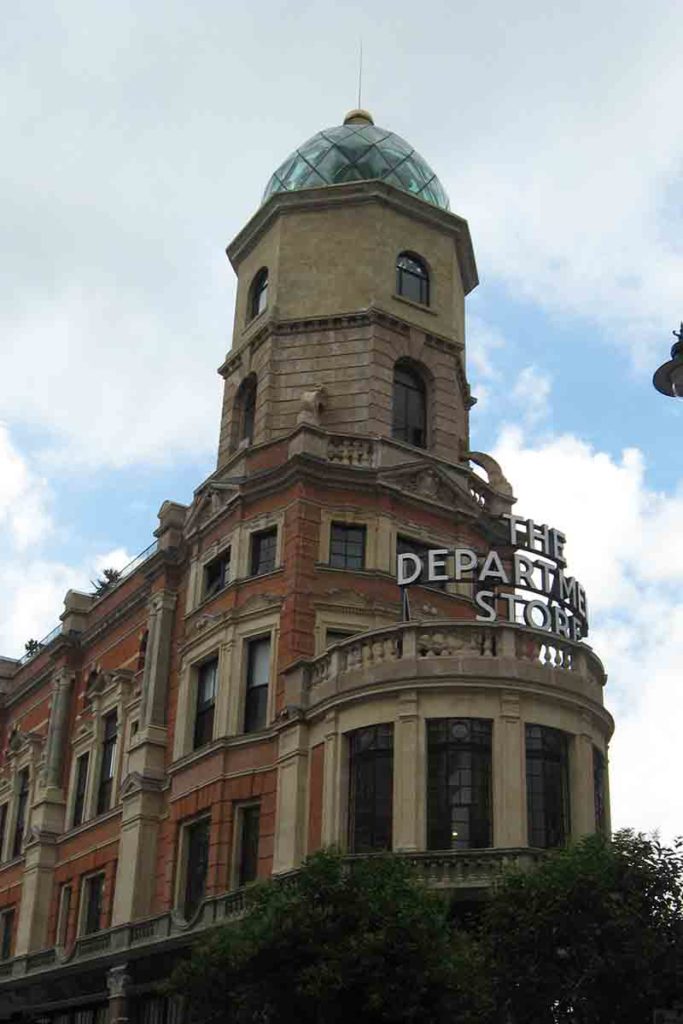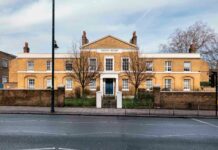

In what is now Brixton’s Town Centre, shops were very limited in numbers and size before the railway station opened in 1862. Numbers increased rapidly during the 1860s as streets of terraced houses sprang up in the surrounding area. These early shops were little different from the houses, apart from a shopfront where the front parlour would be, with the shopkeeper’s family living upstairs. Examples of this basic plan survive in Atlantic Road and Coldharbour Lane.

Brixton shopping began to change in scale with the opening of the Bon Marche in 1877 as the first purpose-built department store in the country. The railway and horse-drawn trams enabled customers to come from a wider area, and other large stores began to open in Brixton. The Bon Marche itself trebled in size in 1887.
Electric Avenue opened in 1888, as the first shopping street lit by electricity, with the lamps suspended from glazed cast-iron canopies which sheltered shoppers from the rain. Initially the electricity came from a coal-powered generator in a yard behind one of the shops.
The early 1900s saw increasing numbers of shoppers coming to Brixton, enabling some of the early traders to expand. Some like David Greig expanded by opening new branches around the wider area, and examples of his thistle logo can still be found on former shops across South London. Others like Quin & Axtens expanded by taking over adjacent shops. Once they had bought the whole Brixton Road frontage between Ferndale and Stockwell Roads, they replaced the small Victorian shop units with a single large department store in 1927.

Market stalls appeared along Atlantic Road from early on, and on what had been long front gardens on the east side of Brixton Road. In 1921 the police moved the market stalls from Atlantic Road, to provide a clear route for buses. The stalls moved to Pope’s Road and Brixton Station Road nearby, but were not to be allowed into Electric Avenue until 1950. Most market traders stored their stalls overnight in railway arches or yards nearby.

Brixton continued to develop as a shopping centre between the two world wars. The shopping centre was extended with new shopping parades added in Brixton Road and Coldharbour Lane. South of the high-level railway bridge, the east side of Brixton Road was rebuilt between 1935 and 1939, using part of the old front gardens to widen the road.
The opening of covered market arcades provided opportunities for market traders to graduate to lock-up shops. The first was Reliance Arcade, linking Brixton Road and Electric Lane in 1929, then Market Row in 1930-31, and eventually the Granville Arcade (now Brixton Village) in 1937.
Bomb damage during the second world war only created a few gaps, which were soon filled. Quin & Axtens had been reduced to a shell, but the block was reinstated with a series of individual shops on the ground floor once again.

From the 1960s onwards, Brixton faced the challenge of how to deal with increasing use of private cars, with its street plan still based on the horse-drawn van and market barrow. By 1969 Lambeth Council was promoting a vision of shoppers moving around at first floor level, above the road traffic, but lacked the resources to carry it out. Only the Recreation Centre and one of nine intended multi-storey car parks were built. The uncertainty discouraged investment by commercial landowners, and the John Lewis Partnership closed the Bon Marche store in 1976. Car-borne shoppers had a choice of other more modern shopping centres, while the new Victoria Line made Oxford Street more attractive to Brixton residents.
Over the past quarter century, Brixton has found a niche which continues to attract visitors from a wider area. This is based on the distinctive character of its street market and arcades, a wide range of cafes and restaurants offering different cuisines, and a clutch of renovated entertainment venues which have created a “24 hour” economy.








